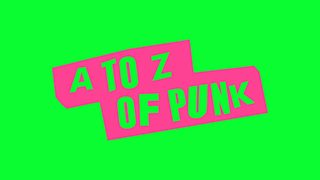12 essential records that capture the spirit of New York City
7 February 2018

What makes a New York record?
As 6 Music hosts a celebration of the 5 Boroughs, we select a dozen essential records that encapsulate the city’s essence.
Very few towns or cities have an atmosphere so evocative that when you hear music inspired by or created within it, the place of origin immediately springs to mind. Even fewer still have an influence that reaches right across the musical spectrum.
New York is one such city, and the New York album is almost a subgenre in its own right. It’s not because of a particular style or sound; being born there helps but it’s not essential, and you don’t even have to mention the city’s name or landmarks in your lyrics (but you can...). Instead a New York album possesses a certain atmosphere, a certain attitude and a certain energy.
With 6 Music presenting a series of programmes celebrating New York this weekend (9-11 February), from the vast number of candidates we have picked out just a handful of Big Apple Albums that make us love the city behind their creation even more.
1. Wu-Tang Clan – Enter The 36 Chambers
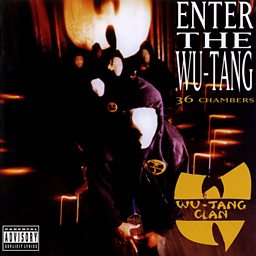
Paul Stokes: Like the city that provided its backdrop, there are so many things going on in the Wu-Tang Clan’s debut that it’s sometimes hard to stand back and put your finger on all the individual things that make it so great. In the middle of its sonic cross streets and lyrical avenues, the album buzzes with life from every corner. Slick rhymes and clever samples whizz by, while the Clan’s variety of voices capture the spirit of New York’s often chaotic sidewalks.
An uncompromising, yet lyrical document of New York street life
However, as the listener settles within this purposeful maelstrom the beauty of this sonic city undeniably emerges.
RZA’s production and authentically old skool beats provide a glue, while the choice of samples (Thelonious Monk, Hall & Oates, Otis Redding and The Jackson 5 are all pressed into service) which might seem unlikely on paper are plausibly weaved together. Yet it’s the individual characters of the Clan themselves that truly star. Offering for the first time an uncompromising, yet lyrical document of New York street life, Enter The 36 Chambers added a kaleidoscope of colour to hip hop subject matter.
A record at the forefront on so many accounts, even now it fizzes with the life and energy akin to the city that created it.
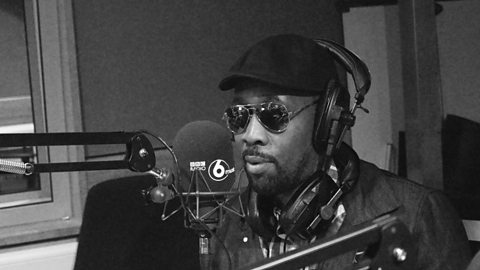
Wu-Tang’s RZA talks about the making of C.R.E.A.M.
RZA talks about the track that changed the game for the Wu-Tang Clan.
-
![]()
The Wu-Tang Clan Radio Show
RZA and Mathematics from the almighty Wu-Tang Clan take over for two hours. The duo play hip hop from across the spectrum and the tracks that have been sampled by the genre.
2. Blondie – Parallel Lines
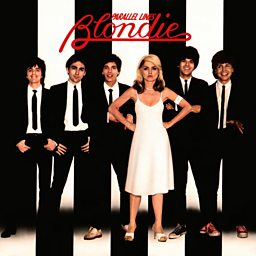
Jeremy Stone: Remarkably it is Queensland not Queens that played a key part in creating two of the most New York albums of the late 1970s.
From the moment the phone rings at the start of Side One, the hooks don’t let up
One of them came into being via a Rolling Stone article, a film producer with a soundtrack to fill and three Australian brothers mixing a live album in France. The other was down to an Australian public schoolboy who’d spent his 20s being the glam pop mastermind behind the hits of Mud, The Sweet and Racey.
In 1977-8 The Gibb brothers and Mike Chapman – both from the same Australian state – respectively produced two multi-million pop monsters that helped to define the Big Apple: Saturday Night Fever and Blondie’s Parallel Lines respectively.
Arguably though, it was Blondie who truly came from Manhattan’s heart.
In 1974, Debbie Harry and Chris Stein lived in a loft in The Bowery. It was so cold and rough they rehearsed wearing gloves. Their transformation over the next few years – leaping ahead of their celebrated CBGB post punk peers like Television, Talking Heads and Patti Smith – which turned Harry into a global cover star and Blondie into a proper pop band was not entirely producer driven; they had the songs, oh those songs, the talent and, of course Harry's presence, but as Blondie’s Jimmy Destri later admitted, they “learnt a lot [from Mike Chapman]”.
And learn they did. Parallel Lines is pure perfect (power) pop. From the moment the phone rings at the start of Side One, the hooks don’t let up thanks in part to the Chapman applied sheen. Even the songs on the record you don’t quite remember – Pretty Baby (all melody and harmonies), Will Anything Happen (a proto run out of The Knack’s My Sharona), and Harry’s snarl on I’m Gonna Love You Too – almost equal the hits you do.
With the suits, the smiles and Debbie Harry on the cover, the album’s artwork instantly immortalised the group like the rock ’n’ roll version of an Andy Warhol soup can: a glorious, lipstick-grazed piece of monochrome art.
But Heart of Glass makes Parallel Lines Blondie’s masterpiece and set them all up for life. If those movie producers had never called the Bee Gees in France then it wouldn’t have been out of place soundtracking Travolta as he shimmied through Brooklyn, tin of paint in hand. Disco sucks.
-
![]()
6 Music Loves New York - Watch now on BBC iPlayer
We’ve chosen some classic music videos, featuring everything from NYC artists Blondie through to A Tribe Called Quest, Beastie Boys and The Strokes.
3. Talking Heads – 77

Paul Stokes: Of course New York's spirit has been captured before, but Talking Heads helped to create – inadvertently rather than by design – the “New York band”, now virtually a genre in its own right. Reflecting the city’s buzzing mix of ideas and influences, cultures and competition – initially honed in the caldron that was CBGBs in the late 1970s – David Byrne and co.’s angular yet accessible music and their simple but cool aesthetic has provided a useful starting point for many other Big Apple bands.
They blended jangly pop with evocative ideas
Their debut, Talking Heads: 77 – released in 1977 naturally – established that art rock blueprint. Jaunty but sharp, tuneful but awkward, the likes of New Feeling, the ornate but intriguing Don’t Worry About The Government and the haunting Who Is It? blend jangly pop with evocative ideas, while with Psycho Killer they created a bona fide art rock smash hit that showed a lot of people felt like outsiders.
Of course other New York blueprints are available – Talking Heads tapped into many themselves, notably The Velvet Underground, Television and the Ramones – but it’s hard to imagine the likes of The Strokes, Yeah Yeah Yeahs, Vampire Weekend, The Moldy Peaches or LCD Soundsystem sounding or looking quite the same way without Talking Heads.
Even contemporaries like Sonic Youth and the Beastie Boys tapped into elements of the world Byrne, Chris Frantz, Tina Weymouth and Jerry Harrison created with this and their later albums.
Talking Heads deserve to be simply appreciated for the beauty they created in their own right, while their influence clearly extends beyond the Hudson River, as the likes of Franz Ferdinand demonstrate.
Indeed St. Vincent – who’s collaborated with Byrne himself – proves they gave the world much more than just a template for New York groups to adapt… but the fact a whole city’s bands are less boring because of Talking Heads is only to their credit.
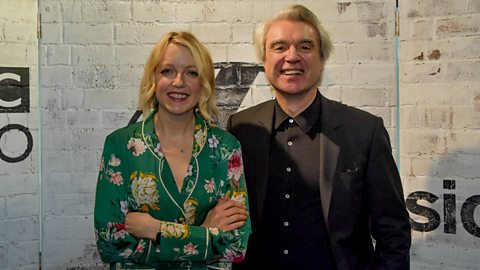
Reasons To Be Cheerful With David Byrne
Lauren catches up with David ahead of the release of his new solo album American Utopia.
4. Nas – Illmatic
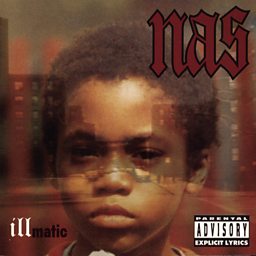
Rowan Collinson: “Dwelling in the Rotten Apple, you get tackled, or caught by the devil's lasso.” For a flavour of the 5 Boroughs as far removed from his long time rival Jay Z as you can ask for, look no further than Nas’ ‘Illmatic’ – widely recognised as the quintessential New York rap album.
A breathless journey through a pre-Giuliani New York
Released in 1994, ‘Illmatic’ is an eloquent look at life in the city’s Queensbridge housing project, where a then 21 year-old Nasir Jones had grown up after relocating from Brooklyn as a small child. Musically drawing on the heritage of his jazz musician father whilst echoing Rakim in his dexterous rhyming flow, Illmatic is a breathless journey through a pre-Giuliani New York where crime is rife and drug use abounds.
The incredible, lucid N.Y. State of Mind – written about a gun battle Nas was witness to – sets the scene for an all too brief 39 minutes and 10 tracks (rumour has it that Columbia Records rush released the album after discovering thousands of bootleg cassette copies were ready to hit the streets of NY hence its brevity, a foreboding of what was in store digitally just a few years later).
Elsewhere The World Is Yours is a rallying call to the projects (“To my peoples throughout Queens, God bless your life”) while One Love – produced by and featuring Q-Tip – comprises of a series of letters between Nas and childhood friends who were serving time in jail.
Over two decades on, Illmatic has lost none of its power and refreshingly its creator is still happy to celebrate his debut; Nas has spent the last couple of years touring the album in full, even playing the album in Kennedy Center in Washington D.C., backed by the National Symphony Orchestra. It’s an incredible journey.
-
![]()
Huey Morgan's tour of New York
Huey pays tribute to his home city. From Brooklyn, Bronx, Queens and Staten, to the Battery and the top of Manhattan Huey guides listeners around all five boroughs.
5. Yeah Yeah Yeahs – Fever To Tell
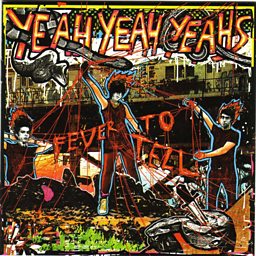
Sean Adams: With their otherworldly cool, it’s sometimes hard to think of the Yeah Yeah Yeahs as being from anywhere, but it’s also impossible to imagine any city other than New York producing a band as raw and regal.
Fever To Tell had the dirt of New York City deep in its pores
‘Fever To Tell’ had the dirt of the city deep in its pores. Every bike engine-like guitar growl feels like it was about to ride off the Brooklyn bridge, while Manhattan’s biting wind howls and shrieks through the record’s tempestuous moments. In the eye of their storm, Karen O’s confidence and strangeness was as instantly aweing as it was unnerving. She swung from a chandelier atop a dense world of sound that seems as cluttered and claustrophobic as the busy Big Apple.
O’s coquette with a Molotov cocktail shtick was the perfect style and substance to detonate amidst the turn of the century malaise. At a time of No Logo and Fight Club cynicism, when the disparity between the haves of Wall Street, the untouchably distant pop stars of MTV, and everyone else loomed large, Karen O’s largesse, empowered by guitarist Nik Zinner’s alien landscapes, felt all-too-human and relevant.
The deadly combo of O, Zinner and drummer Brian Chase quickly saw the band leap ahead of their Brooklyn warehouse dwelling peers (Liars, Metric and Les Savy Fav also all shared a space, long before the Williamsburg was Urban Outfitted). This success was mostly due to their jugular grabbing intensity and angular guitar chimes that masterfully panned around you. They had a twinkling tenderness, that at any moment would give way to those Graham Coxon-esque melodic thruster blasts of noise (Think: Song 2 turned up to 22).
Not only had they hit upon the perfect combination of sound and fury, with Fever To Tell they also found a ‘sweating all over you’ intimacy, as Dave ‘TV on the Radio’ Sitek’s deft production enriched their sound, honing the bombast while making their bluster explode. Combining this suss with their flame-heeled cowboy-booted aesthetic would be enough for some acts to have their lift-off, but right from the off Yeah Yeah Yeahs were writing impeccable indie-dance floor fillers like Y Control, Date With The Night, and Pin. These songs with their killer hooks felt like a year zero in your mind’s eye, and became humongous anthems.
Modern pioneers, O and co. were the band who set the bar high then ran at it with a chainsaw. So from the petrol-spittin’ album opener Rich, every bit of their DNA was clearly defined. Those chiming guitars, the come-hither-so-I-can-destroy-you lyrics, the intoxicating chorus, the oblivion-baiting explosions of distortion, and one of the most interesting drummers who left enticing space for the band's melodies to ignite.
It’s little wonder that 15 years on they remain not just one of the coolest band on earth but also one of the most important, standard bearers for where alternative music will shift next.
6. The Strokes – Is This It
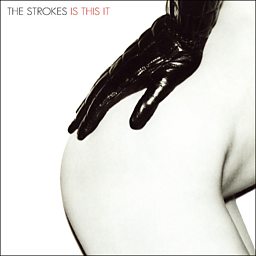
Chris Hawkins: I feel lucky to have been a student during Britpop. Anthemic albums were as common as rock stars at Number 10. From Suede’s Dog Man Star to Pulp’s Different Class via Blur’s Parklife and Definitely Maybe by Oasis, in the mid 90s you were only ever a formaldehyde shark away from a sing-a-long.
The Strokes knew exactly what they wanted
As Cool Britannia melted away, the end of the century held up just fine and 1999 delivered quality LPs by The Flaming Lips, Beck, Underworld, Kelis and Jay Z. The Y2K bug, much like Radiohead’s Kid A, created debate, confusion and criticism. However, unlike the bug that never spread, Kid A left an indelible mark. But then what?
Well, whether the music world was ready for a new sensation or not, it got one. It came courtesy of five swaggering New Yorkers. Just when everything seemed to have gone a bit MOR, The Strokes exploded. After early recordings, and against the advice of their American label RCA (listen below), the band turned to a producer they had met at a New York gig. They weren’t even the band he liked best on the bill that night, but he was intrigued by them and they fell in love with him.
The producer was Gordon Raphael. He was fascinated by the band’s focus, drive and work ethic. The Strokes knew exactly what they wanted and so they and Raphael soon knuckled down to recording sessions that lasted from 3pm until 7am. For weeks. Together they constructed a modern masterpiece, Is This It. A fast, intense, hard-edged but danceable album with distorted vocals and buckets of attitude, The Strokes’ debut was the album music had been waiting for, without realising it.
I listened to the album loud and often. It became a massive seller and is rightly lauded as one of the best records of the 2000s, if not the century so far. Its title is a question without a question mark because it was felt the lack of grammar was more aesthetically pleasing, but add that question mark and for some the answer is undoubtedly: 'Yes!' Although to be fair, how could anyone better one of the greatest debut albums in history?
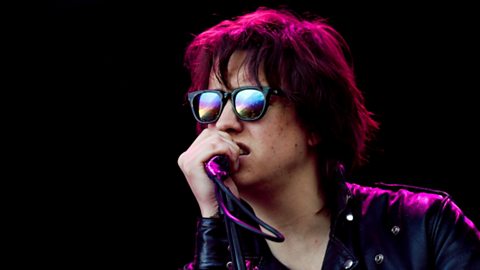
"RCA didn’t like the distortion on the vocals….the band said 'Put that back!'" – Gordon Raphael on recording with The Strokes
The producer describes the buzz of the first initial recording sessions of ‘Is This It’.
7. Simon & Garfunkel – Bookends
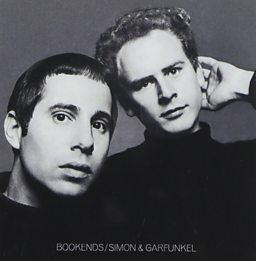
Jeremy Stone: Overshadowed for years by its successor; Bridge Over Troubled Water, the mere 29 minutes of Bookends – released the day before Martin Luther King was murdered – with its gentle depictions of youth, age, mortality and nostalgia plus the attraction of a certain Mrs Robinson now eclipses that 70s blockbuster.
Still the most glorious harmonies ever devised
If you want to see where that oddest of modern genres, indie folk, started then Simon & Garfunkel's 1968 fourth studio album, recorded with producer Roy Halee holed up in CBS’s Manhattan studio, is the key place to start.
Despite the duo’s unfair MOR reputation, it sits equally alongside those other 1967/68 tent poles: The Band’s Music From Big Pink, Bob Dylan’s John Wesley Harding and The Notorious Byrd Brothers as a crucial influence.
The ambition of Side One – Paul Simon later dismissed Side Two’s songs unfairly declaring: “they didn’t mean a lot” – firmly placed the duo reaching, at last, for the studio highs of rivals Brian Wilson and George Martin. Moogs, violas, strings and even a sound collage in an old people’s home, enhance what are still the most glorious harmonies ever devised.
America is for some their masterpiece, I’ve a soft spot for Hazy Shade Of Winter their last Byrdsian folk rock outing, but it is the eerie Bookends Theme itself that stars. Just an acoustic guitar, tugging hard at innocence against a backdrop of assassinations and the aftermath of war. Soundtrack producers know its power, with the most recent reminder being the perfect poignant closer to an episode of Ken Burns’ Vietnam.
Now 50 years on, not everyone is counting cars on the New Jersey turnpike, but with decades of hyper partisan arguments and faded dreams now the norm across the water, Bookends was right: we’ve all gone to look for America.
8. Vampire Weekend – Vampire Weekend
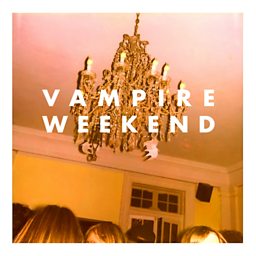
Paul Stokes: The reason very few school or college bands make it is… well, they have names like Vampire Weekend. Full of good intentions, but clunky and adolescent in their execution, the music of these ‘first try’ groups often reflects the naivety behind the name.
An intricate yet accessible mix of indie curiosities and pop bangers
Though formed while studying at New York’s Columbia University, fortunately Vampire Weekend’s moniker is their only leftover from freshers’ week. Of course a band boasting a musical genius studying musical theory (Rostam Batmanglij, who left the band in 2016), a creative writer able to bend his short stories into lyrical vignettes (Ezra Koenig), and a rhythm section who, though no academic slouches themselves, were not only sympathetic to but understood the Afrobeats they made their own (Chris Baio and Christopher Tomson), meant that Vampire Weekend were always going to be smarter than the average college band. Yet their self-titled debut album proves, remarkably, greater than the sum of these parts.
Fusing the aforementioned rhythms with harpsichords, pristine guitar jangles and perfectly drawn scenes that fill their songs, the record is an intricate yet accessible mix of indie curiosities and pop bangers, as the likes of A-Punk, Mansard Roof, Oxford Comma and M79 both intrigue and move dancing feet.
What’s more, Vampire Weekend's first record is every inch a New York album, but while many other records that have taken inspiration from the city have been drawn to its dark, nocturnal life, the musical neighbours here are lit by golden sunshine.
Taking cues from Paul Simon’s colourful early solo efforts, their debut captures the hustle and bustle of life lived at full pace, neatly reflecting back the cultural fusions that come from people quite literally living on top of each other on Manhattan island.
Clever, witty, assured, though never snobbish, Vampire Weekend’s debut is a sophisticated yet instinctive album - so much so that after a few listens even that name starts to make sense... sort of.
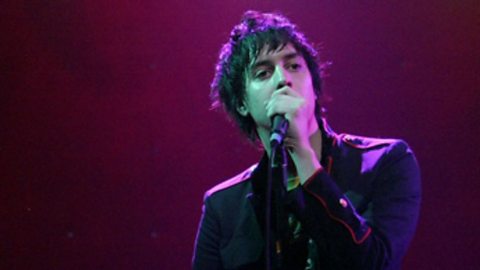
Cillian Murphy chats to writer Lizzy Goodman about the New York music scene of 2001-2011
The pair talk about Lizzy's book which chronicles bands such as The Strokes and Interpol.
9. Princess Nokia – 1992 Deluxe
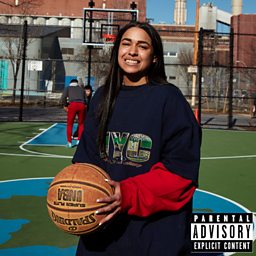
Paul Stokes: Not only does Princess Nokia’s 2017 debut represent a new approach for hip hop, it presents New York through a new prism: the intensely personal.
A fresh, microcosmic take on life in the 5 Boroughs
Close, intimate and candid, both in terms of its subject matter and its tight, enveloping production, Nokia – real name Destiny Frasquer – serves-up a series of intense flows that skip between confession and commentary; diary entries and diatribe. It makes 1992 Deluxe a fragile yet frank affair, though the record could never be considered weak, as tracks like Tomboy and Mine are powered forward by Princess Nokia’s hard won strength and confidence.
Though springing from the personal, the sounds and smells of Nokia’s hometown seep in between her rhymes and crystalline beats. New York is after all a city of 8.5 million individuals and 1992 Deluxe offers a fresh, microcosmic take on life in the 5 Boroughs – while with the smooth ABCs of New York she even offers a tour of her Big Apple.
-
![]()
Gilles Peterson explores New York's cutting edge music scene
Gilles heads to the city to find the emerging artists shaping its musical future.
10. The Rapture – Echoes
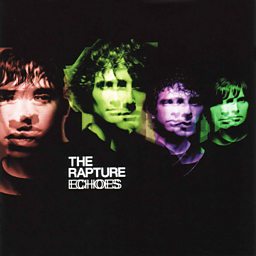
Rowan Collinson: The history of New York music is littered with game changing 12-inch dance records; Liquid Is Liquid, UFO and Go Bang to name but three.
The sound of the reenergised Brooklyn underground
But when The Rapture's House Of Jealous Lovers arrived on DFA Records in the spring of 2002, it encapsulated the sound of the reenergised Brooklyn underground – all cowbells, driving bass and frontman Luke Jenner's yelping, urgent vocals. Released on James Murphy's DFA Records, it quickly become a staple of the alternative club scene in the US and UK, opening the floodgates for a new wave of bands doffing their caps to punk-funk from Radio 4 to Franz Ferdinand.
The following album Echoes was mired in high politics from the start. The subject of the major label bidding war, the band eventually signed a $1.8 album million, three album deal with Universal, much to the chagrin of Murphy and then co DFA owner Tim Goldsworthy – although as a result the record sat in label no-mans-land for a year before its release in 2003.
By then the hype-baton had been passed on to Murphy's own LCD Soundsystem but Echoes remains a fine document of the era, from house stylings of I Need Your Love to the punk–funk cry of Sister Saviour. The critical rapture may not have lasted, but the band carried on for the three more albums – even returning to DFA in splendid fashion in the end – before going on hiatus at the end of 2014.
11. Interpol – Turn On The Bright Lights
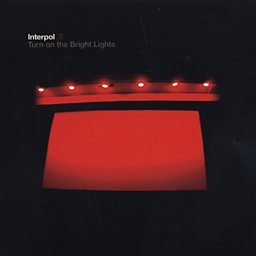
Sean Adams: Beloved by the (sometime) black-clad, Interpol’s debut album was much more than a dark indie record; much more than a sophisticated rock record. It was the sound of a band unafraid to throw themselves into an abyss.
It devours you, little by little
Turn On The Bright Lights reached from the void. Its pale outstretched hand touched those who felt attuned to its darkness. It intrigued. It wowed. Teased. Stalked. Erupted. Anti-climaxed. It deviated masterfully from elegantly wasted to inconsolably morose.
At times, it all felt unfamiliar but with the silhouette of somewhere or someone you can't quite place. There were key ingredients we recognised. For every soup spoon of Joy Division, splash of How Soon Is Now?, and thimble filled with the zest of The Cure, there was a distinct flavour of something new.
Surprising sharp edges came from the Wu Tang Clan or the buttered blade of Marilyn Manson, sandwiched in amongst it all was the epic elegance of Mogwai, Talk Talk, and Sigur Ros. The combination is utterly devastating.
It devours you, little by little. It leaves you sat in a reverent awe. Unsure whether you're meant to feel energised or anaesthetised. Or both. Emotionally raw, sonically taut and gloriously cinematic, Turn On The Bright Lights is a modern classic.
-
![]()
The First Time With... Paul Banks
Interpol's frontman shares some musical firsts with 6 Music's Matt Everitt.
12. LCD Soundsystem – Sound Of Silver
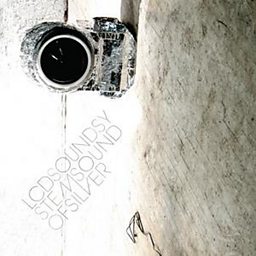
Paul Stokes: Should New York’s Subway ever introduce an electronic card system then James Murphy has a plan to actually soundtrack New York.
LCD capture the pulse and charge of Big Apple living
The idea he shared with Q Magazine is – should NYC ever gets something similar to London’s Oyster cards and the like – for each station to have a unique mini theme composed by him that would mesh together into a near-endless variety of longer pieces that would accompany people as they tapped in and out, travelling around the city.
If the technology is ever updated and Murphy’s scheme becomes plausible, then he needs nothing more to prove his worthiness for the job than Sound Of Silver.
LCD Soundsystem’s second album is at once a selection of New York snapshots, a series of themes and a host of moods that come together in a dance-driven symphony that captures the pulse and charge of Big Apple living.
It’s an album that swoons between the skyscrapers (All My Friends), rattles along the Subway (Us Vs Them), parties in dive bars (North American Scum), contemplates life (Someone Great) and celebrates the city’s famous grime (New York, I Love You But You’re Bringing Me Down).
Whether or not the pencil pushers at City Hall ever let Murphy make his subterranean civic schemes a reality, with Sound Of Silver he and LCD Soundsystem have already done as much as anyone to capture and map New York’s attitude and atmosphere. They should just go ahead and name a street after him.
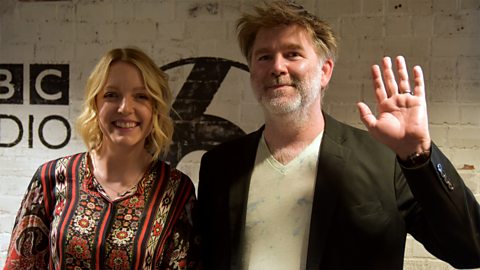
"I have a version of my 15 year old self that lives in my head" James Murphy of LCD Soundsystem chats to Lauren
LCD Soundsystem's James Murphy chats to Lauren about his return to making music
Follow us on Facebook, on Twitter @BBC6Music, or on Instagram @BBC6Music.
Contributors:
Sean Adams, Social Producer, 6 Music
Rowan Collinson, Senior Content Producer, 6 Music
Chris Hawkins, Presenter, 6 Music
Paul Stokes, Music Journalist/ Digital Producer, 6 Music
Jeremy Stone, Executive Producer, BBC Radio
6 Music Loves New York
-
![]()
What's On
A celebration of New York spanning all genres, from hip hop to punk
-
![]()
Wu-Tang Clan Radio
RZA and Mathematics take over for 2 hours.
-
![]()
Gilles Peterson's New New York
Fresh sounds from the Big Apple
-
![]()
Cerys Matthews with Nick Hakim in session
The New York resident is live
-
![]()
Huey Morgan's 5 Boroughs
Huey takes us on a special musical tour of his hometown














